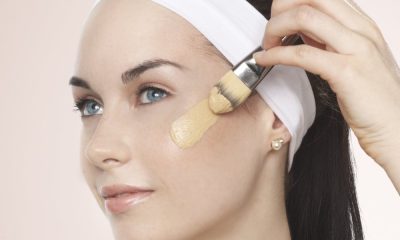Skin is the protective organ, an outer layer of our body that grows, stretches and wrinkles in response to a person’s age, habits, environmental factors, etc. Skin is also sensitive to allergens, pathogens, sun’s rays, temperature, pressure, etc. These are some of the reasons why sometimes everyone encounters some or the other skin care issues, and that is when one seeks out a dermatologist.
Dermatologists are experts in the branch of medicine involving diagnosis and treatment of diseases and cosmetic disorders of skins, nails, scalp or hair. Patients seek dermatologists when they have skin conditions pertaining to (but not restricted to the list) as follows:
• Acne / Acne scars
• Dark spots
• Pigmentation
• Blackheads and Large pores
• Wrinkles
• Skin burn
• Excessive dandruff
• Cosmetic surgeries if required
Dermatological Diagnostic And Treatment Procedures
Some of the best skin clinics offer free first consultation along with skin care treatments as required. Skin specialists often perform specialized diagnostic procedures related to skin conditions either for treatment or to understand the nature of concern. These may be of many types.
1. Examination: When the dermatologist tries to understand the patient’s history and verifies the concerns and causes through physical examination.
2. Biopsy: When physical examination yields no satisfactory result, a sample of skin tissue from the affected area is removed for testing. This procedure is easy to carry out, safe and very much dependent on the suspected diagnosis and location of skin condition.
3. Electrodessication::This fast and simple procedure requires no prior preparation. It uses electric current delivered through a needle-shaped electrode to superheat the skin in pinpoint precise areas to cure bleeding blood vessels, remove non – cancerous growths and scrape away abnormal skin cells or bacterial growths.
4. Phototherapy: This method uses ultraviolet (UV) light to treat certain skin conditions like, psoriasis, eczema, itching, vitiligo, etc. Since UV light can suppress the immune system, this therapy is used to decrease the inflammation associated with skin conditions responsive to this therapy. Phototherapy can either be used alone or in combination with tropical or systematic medications depending on the case.
5. Allergy Testing / Patch Testing: This method is employed to assess if a rash is caused by a suspected allergen, when it is brought in contact with the patient’s skin. In addition to patch testing, a keen evaluation of exposures, location and pattern of rash and clinical history of patient is vital in order to understand and determine the allergen.
6. Cryosurgery: Also known as Cryotherapy, this method is the application of extreme cold to destroy abnormal or diseased tissue for curing benign as well as malignant skin conditions like warts, moles, skin tags, solar keratoses and small skin cancers.
7. Tattoo Removal: This procedure is performed with various tools – Laser removal being the most commonly used method. While tattoos were once considered permanent, it is now possible to remove them with treatments, fully or partially.


















